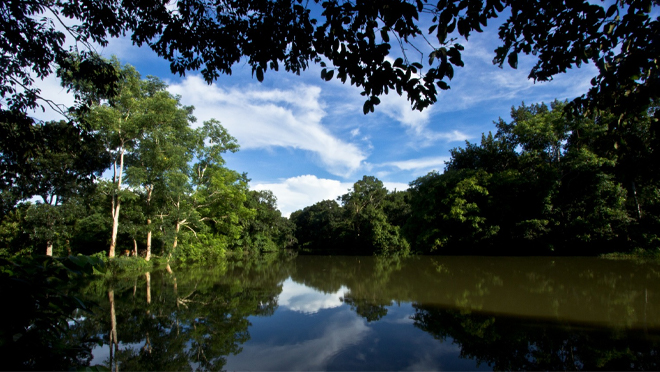Rema–Kalenga wildlife sanctuary in Habiganj: A complete travel guide
Rema–Kalenga wildlife sanctuary in Habiganj: A complete travel guide

Far from the bustle of Bangladesh’s crowded cities, several wildlife sanctuaries protect endangered species, preserve ecological balance, and offer havens for migratory birds. Among them, the Rema–Kalenga Wildlife Sanctuary in Habiganj stands out for its rich biodiversity and serene landscapes. Established in 1982 and expanded in 1996, this evergreen forest is home to rare flora and fauna, as well as indigenous communities who continue to live in harmony with nature.
This guide offers everything you need to know before planning a trip to Rema–Kalenga — from its location and significance to things to see, travel routes, and accommodation options.
Location
The sanctuary lies in Chunarughat Upazila of Habiganj District under the Sylhet Division, bordering India’s Tripura state and close to Srimangal in Moulvibazar. About 130 km northeast of Dhaka, it includes the Kalenga, Rema, Chanbari, and Rashidpur sections of the Habiganj Forest Range.
Significance
Rema–Kalenga is Bangladesh’s second-largest wildlife sanctuary and one of the last remaining natural forests in relatively good condition. Spanning 1,795.54 hectares, it is a dry evergreen forest second in size only to the Sundarbans. Recognised as an Important Bird Area (IBA) by BirdLife International, the sanctuary is crucial for conserving biodiversity but remains threatened by deforestation and illegal logging.
Flora
The forest is home to 638 species of plants, including teak, hargaza, haritaki, bohera, jamun, fig, kadam, neem, and champa jackfruit. Its dense greenery provides a refreshing escape for visitors and sustains the sanctuary’s diverse wildlife.
Fauna
Rema–Kalenga supports an impressive range of species:
- Birds: Greater Racket-tailed Drongo, Hill Myna, Asian Pied Hornbill, Junglefowl, Spotted Dove, Magpie Robin, and Spotted Owlet.
- Mammals: Wild boars, barking deer, fishing cats, civets, jackals, western hoolock gibbons, capped langurs, and leopard cats.
- Reptiles & Amphibians: Burmese pythons, green pit vipers, and various lizards and frogs.
Although tigers and leopards were reportedly common in the 1960s, confirmed tiger sightings have ceased since 1971. Leopards occasionally stray in from Indian forests, but jackals and small wildcats are now the main terrestrial predators.
What to see and do
- Nature Trails: Three marked trails of 30 minutes, one hour, and three hours take visitors through lush forest paths.
- Watchtower: Offers panoramic views of the forest canopy and distant hills.
- Man-made Lake: Built to provide water for wildlife, now a tranquil spot for visitors.
- Indigenous Communities: Four groups — Tripura, Santal, Telugu, and Urang — live in and around the forest, offering a glimpse into traditional lifestyles.
Best time to visit
The sanctuary can be visited year-round. However, during the monsoon, trails become slippery and difficult to navigate.
How to get there
Via Shayestaganj
- From Dhaka, take a Sylhet-bound bus or train and get off at Shayestaganj. Bus fares: Tk250–300.
- The Upaban Express also stops at Shayestaganj. Train fares: Tk120–673.
- From Shayestaganj, hire an autorickshaw or baby taxi to Kalenga (Tk500–600).
Via Srimangal
- Buses (Tk350–450) and trains are available from Dhaka to Srimangal.
- From Srimangal, a jeep ride to Kalenga costs Tk2,000–3,000, offering a scenic forest journey (though difficult in the rainy season).
Where to stay
- Kalenga Rest House: Managed by the Forest Department (permission required).
- Nishorgo Taraf Hill Cottage: Popular among tourists.
- Hotels in Habiganj town: Tk 800–2,500 per night.
- The Palace Resort, Bahubal Upazila: Luxury stay, Tk 7,000–15,000 per night.
Travel tips and cautions
- Always hire a local guide for safety and navigation.
- Avoid travelling during the monsoon to prevent accidents.
- Respect the forest environment and local communities.


